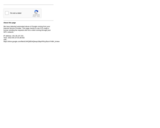
A book covering the start of Western Philosophy and the Ancient World.
- Subject:
- Arts and Humanities
- Philosophy
- Material Type:
- Textbook
- Author:
- Dr. Noah Levin
- Date Added:
- 06/21/2022


A book covering the start of Western Philosophy and the Ancient World.

This course elaborates the history of Ancient Greece from the Bronze Age to the death of Alexander. It covers major social, economic, political, and religious trends. It also includes discussions on Homer, heroism, and the Greek identity; the hoplite revolution and the rise of the city-state; Herodotus, Persia, and the (re)birth of history; Empire, Thucydidean rationalism, and the Peloponnesian War; Platonic constructs; Aristotle, Macedonia, and Hellenism. Emphasis is on use of primary sources in translation.

This course covers the history of Rome from its humble beginnings to the 5th century A.D. The first half covers Kingship to Republican form; the conquest of Italy; Roman expansion: Pyrrhus, Punic Wars and provinces; classes, courts, and the Roman revolution; Augustus and the formation of empire. The second half covers Virgil to the Vandals; major social, economic, political and religious trends at Rome and in the provinces. There is an emphasis on the use of primary sources in translation.

This book provides an overview of the current debates about the nature and extent of our moral obligations to animals. Which, if any, uses of animals are morally wrong, which are morally permissible (i.e., not wrong) and why? What, if any, moral obligations do we, individually and as a society (and a global community), have towards animals and why? How should animals be treated? Why?
We will explore the most influential and most developed answers to these questions – given by philosophers, scientists, and animal advocates and their critics – to try to determine which positions are supported by the best moral reasons.
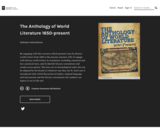
By engaging with this resource which presents texts by diverse world writers from 1650 to the present, learners will: (1) engage with diverse world writers in translation, including canonical and less canonical texts, and (2) identify literary conventions and trends across genres. The texts are in chronological order, but can be adapted by the faculty in whatever way they see fit. Each text is introduced with a brief discussion of author, original language and time period, and the literary conventions the students can expect to see in the text.

This class examines how anthropology and speculative fiction (SF) each explore ideas about culture and society, technology, morality, and life in “other” worlds. We investigate this convergence of interest through analysis of SF in print, film, and other media. Concepts include traditional and contemporary anthropological topics, including first contact; gift exchange; gender, marriage, and kinship; law, morality, and cultural relativism; religion; race and embodiment; politics, violence, and war; medicine, healing, and consciousness; technology and environment. Thematic questions addressed in the class include: what is an alien? What is “the human”? Could SF be possible without anthropology?
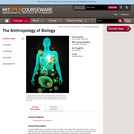
This course applies the tools of anthropology to examine biology in the age of genomics, biotechnological enterprise, biodiversity conservation, pharmaceutical bioprospecting, and synthetic biology. It examines such social concerns such as bioterrorism, genetic modification, and cloning. It offers an anthropological inquiry into how the substances and explanations of biology—ecological, organismic, cellular, molecular, genetic, informatic—are changing. It examines such artifacts as cell lines, biodiversity databases, and artificial life models, and using primary sources in biology, social studies of the life sciences, and literary and cinematic materials, and asks how we might answer Erwin Schrodinger’s 1944 question, “What Is Life?” today.

This course applies the tools of anthropology to examine biology in the age of genomics, biotechnological enterprise, biodiversity conservation, pharmaceutical bioprospecting, and synthetic biology. It examines such social concerns such as bioterrorism, genetic modification, and cloning. It offers an anthropological inquiry into how the substances and explanations of biology—ecological, organismic, cellular, molecular, genetic, informatic—are changing. It examines such artifacts as cell lines, biodiversity databases, and artificial life models, and using primary sources in biology, social studies of the life sciences, and literary and cinematic materials, and asks how we might answer Erwin Schrodinger’s 1944 question, “What Is Life?” today.

This course explores a range of contemporary scholarship oriented to the study of ‘cybercultures,’ with a focus on research inspired by ethnographic and more broadly anthropological perspectives. Taking anthropology as a resource for cultural critique, the course will be organized through a set of readings chosen to illustrate central topics concerning the cultural and material practices that comprise digital technologies. We’ll examine social histories of automata and automation; the trope of the ‘cyber’ and its origins in the emergence of cybernetics during the last century; cybergeographies and politics; robots, agents and humanlike machines; bioinformatics and artificial life; online sociality and the cyborg imaginary; ubiquitous and mobile computing; ethnographies of research and development; and geeks, gamers and hacktivists. We’ll close by considering the implications for all of these topics of emerging reconceptualizations of sociomaterial relations, informed by feminist science and technology studies.

This class examines the ways humans experience the realm of sound and how perceptions and technologies of sound emerge from cultural, economic, and historical worlds. In addition to learning about how environmental, linguistic, and musical sounds are construed cross-culturally, students learn about the rise of telephony, architectural acoustics, and sound recording, as well as about the globalized travel of these technologies. Questions of ownership, property, authorship, and copyright in the age of digital file sharing are also addressed. A major concern will be with how the sound/noise boundary has been imagined, created, and modeled across diverse sociocultural and scientific contexts. Auditory examples — sound art, environmental recordings, music — will be provided and invited throughout the term.

This class has been reorganized to focus primarily on the War in Iraq. As in previous years, the class still examines war in cross-cultural perspective, asking whether war is intrinsic to human nature, what causes war, how particular cultural experiences of war differ, and how war has affected American culture.

This course examines traditional performances of the Arabic-speaking populations of the Middle East and North Africa. Starting with the history of the ways in which the West has discovered, translated and written about the Orient, we will consider how power and politics play roles in the production of culture, narrative and performance. This approach assumes that performance, verbal art, and oral literature lend themselves to spontaneous adaptation and to oblique expression of ideas and opinions whose utterance would otherwise be censorable or disruptive. In particular we will be concerned with the way traditional performance practices are affected by and respond to the consequences of modernization.
Topics include oral epic performance, sacred narrative, Koranic chant performance, the folktale, solo performance, cultural production and resistance.

Short Description:
Written by Sophocles circa 441 BC, Antigone is an Athenian tragedy. Of the three Theban plays, Antigone is the third in order of the events depicted in the plays, but was the first to be written. The reading order of the Theban plays is: Oedipus Rex, followed by Oedipus at Colonus and ending with Antigone.
Long Description:
Written by Sophocles circa 441 BC, Antigone is an Athenian tragedy. Of the three Theban plays, Antigone is the third in order of the events depicted in the plays, but was the first to be written. The reading order of the Theban plays is: Oedipus Rex, followed by Oedipus at Colonus and ending with Antigone.
Word Count: 11140
(Note: This resource's metadata has been created automatically as part of a bulk import process by reformatting and/or combining the information that the author initially provided. As a result, there may be errors in formatting.)

This course introduces students to the spatial, legal, economic, social and political structures that created apartheid in South Africa, and to the factors that led to the collapse of the racist order. We will examine the many forms of Black oppression and, also, the various forms of resistance to apartheid. Some of the themes we will explore include industrialization and the formation of the Black working classes; the constructions of race, ethnicities, and sexualities; land alienation and rural struggles; township poverty and violence; Black education; the African National Congress; and the Black Consciousness Movement.

Short Description:
Every applied ethics course requires some brief introduction, survey, or primer on ethical theory and moral decision-making. At the same time, spending too much time on argumentation and normative ethical theory can take precious course time away from the applied issues that are the focus of the course. This Applied Ethics Primer offers a concise introduction to both basic argumentation and normative ethical theory. The concepts discussed reflect the ethical theories that currently ground most professional ethics codes and debates in applied ethics. Somewhat more inclusive than many similar resources, this primer offers students a taste of the truly global history of ethics, while still being squarely focussed on providing practical tools for ethical decision-making. It is appropriate for any introductory applied ethics course.
Long Description:
Every applied ethics course requires some brief introduction to ethical theory and philosophical reasoning. Without this, applied ethics courses risk merely teaching students how to rationalize their prejudices and preferences rather than teaching them how to critically assess and engage in ethical decision-making. At the same time, spending too much time on normative ethical theory can take precious course time away from the applied issues that are the focus of the course.
The Applied Ethics Primer offers a concise intoduction to both basic argumentation and normative ethics that can be integrated into any applied ethics course. The primer provides the basic conceptual tools needed to analyze ethical positions, identify ethical problems, and assess arguments, all without assuming any prior knowledge of ethics or argumentation theory. The concepts discussed reflect the normative concepts that ground most professional ethics codes and debates in applied ethics. At the same time, the content is global, drawing on ethical theories and practices from Asia, Africa, Europe, and Indigenous traditions of North America, as well as feminist theory.
Part I introduces the ethical question—what should I do?—and how to address it. The first chapter alerts readers to the role of emotions in moral responses and the importance of reflection. This grounds a brief discussion of disagreement that leads to the second chapter on reason and argument. Here we introduce argument analysis and offer advice on how to engage in productive debates and the importance of public reasons.
Part II constitutes the main body of the primer—the ethical lenses. The first chapter focuses on consequences, presenting both the ideas of Mozi and act and rule utilitarianism. We then turn to a focus on action, with a discussion of duties based on social role, past action, and reason alone, which draw from a passage in the Bhagavad Gita, the work of W.D. Ross, and Kantian deontology, respectively. The chapter that focuses on character (and virtue) addresses both Aristotle’s eudaimonism and Buddhist ethics, particularly emphasizing the root poisons and the eightfold path. The last main chapter in this part addresses ethical approaches that focus on relations, looking at feminist ideas about personal and political relationships (with a nod to Kongfuzi), before turning to African communal ethics, captured by the concept of ubuntu, and the all my relations and seven generations teachings from the philosophies of the first nations of what settlers call North America. The part on ethical lenses is followed by a brief part that addresses a couple of important ethical ideas that cannot be captured by any given lens. Here we introduce the concept of ahimsa (or non-violence), which reflects all of the lenses equally, and the concept of rights that cannot adequately be captured by any of them.
The final part addresses self-regarding attitudes, such as rational self-interest—which is shown to ground social contract theory—as well as biases like exceptionalism and moral licensing. We end this section with a discussion of helpful heuristics and conclude the primer with an emphasis on the importance of careful reflection and argumentation for ethical decision-making.
The primer has several pedagogical tools, including a set of recommended readings at the end of the chapters that address substantive ethical theories, a set of “Stop and think” reflective excercises throughout the primer, and brief self-quizzes at the end of each chapter. The appendix includes a set of tips for reading philosophy and a critical thinking worksheet. There is also a glossary for key terms. We also provide support for how to cite the primer and how to pronounce some of the unfamiliar terms.
Word Count: 27818
(Note: This resource's metadata has been created automatically by reformatting and/or combining the information that the author initially provided as part of a bulk import process.)
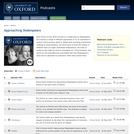
Each lecture in this series focuses on a single play by Shakespeare, and employs a range of different approaches to try to understand a central critical question about it. Rather than providing overarching readings or interpretations, the series aims to show the variety of different ways we might understand Shakespeare, the kinds of evidence that might be used to strengthen our critical analysis, and, above all, the enjoyable and unavoidable fact that Shakespeare's plays tend to generate our questions rather than answer them.

A Humanities Textbook: Lower Division
Short Description:
An introductory examination of cultural appropriation in the fine arts and popular arts of the United States, with reference to historical, literary, and other cultural developments. The primary focus is the use of cultural appropriation to communicate ideas about racial identity in ways that have served the interests of the dominant culture. Areas of specific concern are voice appropriation, content appropriation, style appropriation, and motif appropriation. The emphasis is on historically significant examples in the visual arts, literature, theater, and music. As expressive communication, the arts are central to cultural identity. Cultural appropriation is wrong when it undermines America's diversity of cultural identities. Generations of American artists have used cultural appropriation as a tool of racial privilege. Despite this history of harmful and wrongful appropriation, cultural appropriation also provides a tactic of response and self-empowerment for non-dominant groups. Appropriation is frequently used by non-dominant groups and subcultures as a tool of active resistance against stereotyping and discrimination.
Word Count: 68176
(Note: This resource's metadata has been created automatically by reformatting and/or combining the information that the author initially provided as part of a bulk import process.)
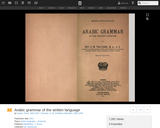
First published in 1910, this book focuses exclusively on the grammar of Modern Standard Arabic as it is used in written Arabic. It contains an introduction that explains the Arabic alphabet and pronunciation and 49 lessons that describe the foundational grammatical elements of MSA, including articles, gender, and the noun and verb systems. The text includes Arabic-English and English-Arabic vocabulary sections as well as a supplement with extract from the Qur'an, classical literature, media, and correspondence. The filesize of the PDF is 32 MB.
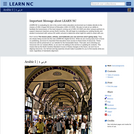
This is a textbook for beginning Arabic language learning. The textbook is divided into twelve lessons. Each lesson focuses on an activity and common theme to introduce the basics of Arabic. Each lesson starts with a short video, which you'll be asked to watch. To help you understand the video, each lesson also includes a transcript (in English), a list of vocabulary (with audio clips), and language and grammar notes.
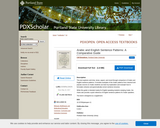
This text explores verb time, tense, aspect, and mood through comparison of Arabic and English sentence patterns. It includes examples of the Arabic patterns from classical and popular sources so Arabic students can learn by explanation and example how to formulate cohesive and grammatically correct sentence structure.
While this guide is intended mainly for English-speaking students studying Arabic, the charts also provide a quick reference of English sentence patterns for Arabic speakers.
The book is designed as a supplement.